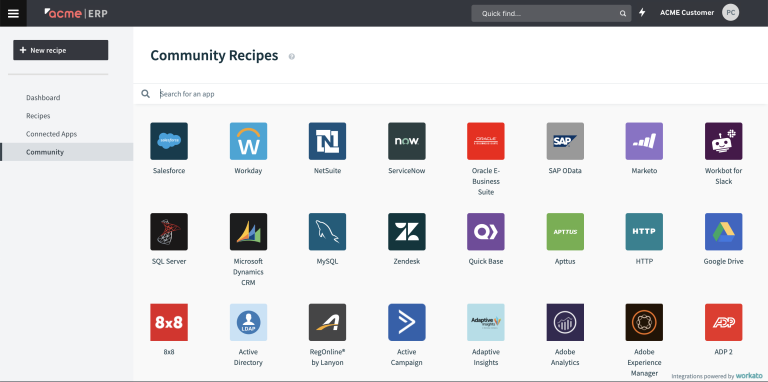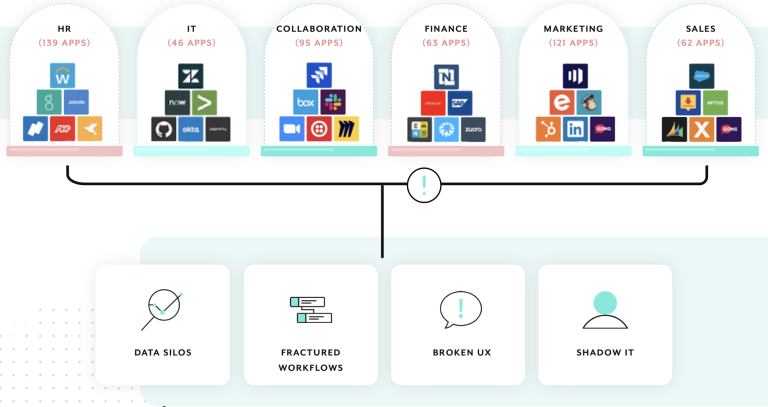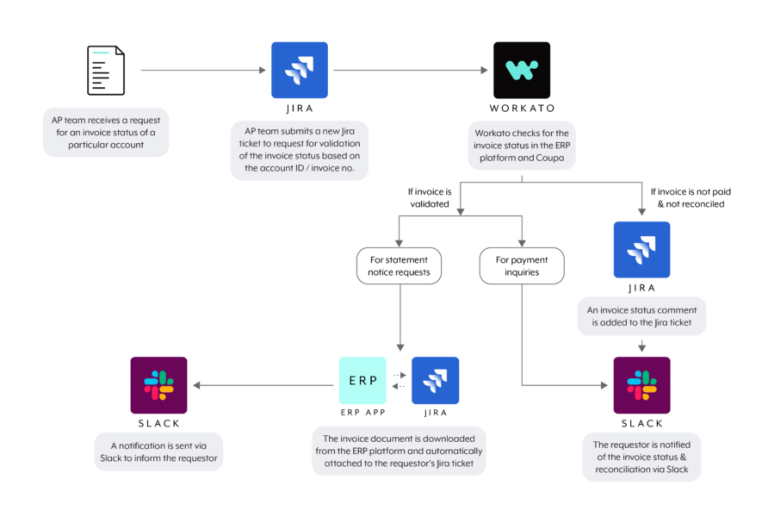Companies Like Workato A Comparative Analysis
Companies like Workato are revolutionizing how businesses connect disparate software systems. This analysis delves into the competitive landscape, exploring alternative platforms and highlighting Workato’s strengths and weaknesses within specific use cases. We’ll compare pricing models and integration options, providing a comprehensive overview to help businesses understand the complexities of modern data integration.
Workato’s niche within the integration space is significant. This analysis will explore the specific industries and use cases where Workato excels, along with detailed examples of successful implementations. Furthermore, we will examine emerging trends in the integration sector and forecast how Workato might adapt to remain competitive in the future.
Comparing Alternatives to Workato
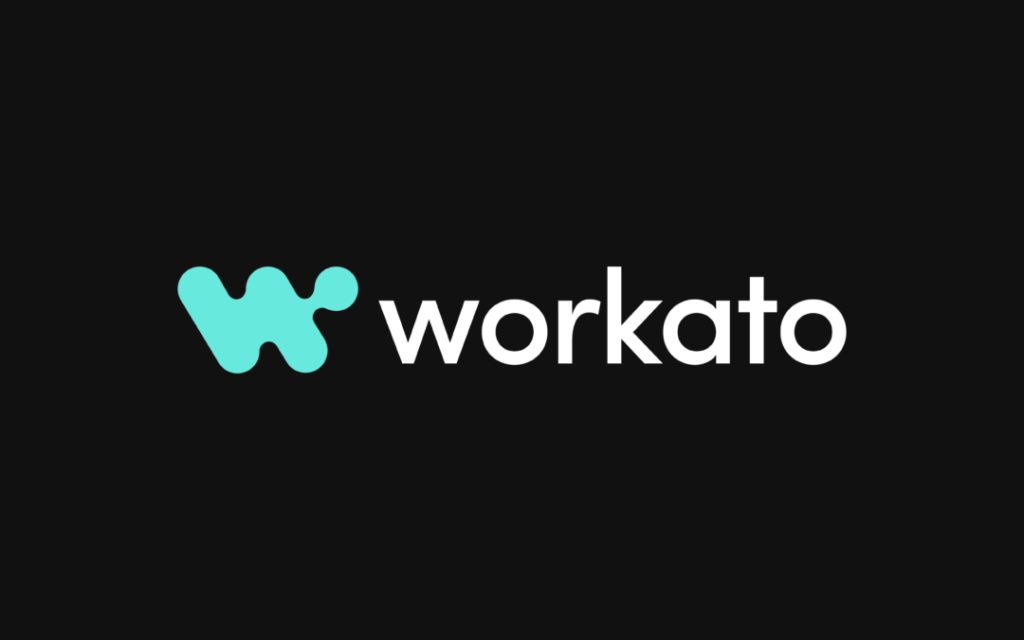
Workato stands out as a powerful integration platform, but numerous competitors offer similar functionalities. Understanding the strengths and weaknesses of these alternatives is crucial for businesses seeking the optimal solution for their specific needs. This analysis delves into three prominent competitors, providing a comprehensive comparison of their features, functionalities, pricing, and integration capabilities.
Comparative Analysis of Features and Functionalities
Workato, along with its competitors, provides a robust set of features to facilitate data integration. Each platform offers a unique approach, catering to different business needs. A key consideration is the complexity of the integrations required and the specific data sources involved. This section assesses the strengths and weaknesses of these platforms in the context of similar use cases to Workato.
Competitor Strengths and Weaknesses
- Platform A: This platform excels in its user-friendly interface, particularly for simpler integrations. Its visual drag-and-drop interface makes it accessible to non-technical users. However, its advanced features might fall short for complex integrations requiring extensive customization or specific data transformations. Its pricing model is often more cost-effective for smaller-scale projects. Examples of its strengths include rapid prototyping and quick setup, but it might not support intricate transformations or large-scale data flows. It excels in scenarios requiring rapid implementation.
- Platform B: Known for its extensive library of pre-built connectors, this platform simplifies the connection to various data sources. Its emphasis on automation makes it ideal for repetitive tasks. However, its flexibility in handling complex transformations might be limited compared to platforms like Workato. This platform is well-suited for routine integrations, but its advanced customization options might be challenging to navigate for users with limited technical expertise. Examples of its strengths include pre-built connectors and extensive automation support.
- Platform C: This competitor is recognized for its robust API support. It’s particularly well-suited for companies with extensive API integrations. Its extensive API documentation and support are a significant strength. However, its visual interface might be less intuitive for non-technical users compared to other options. It is ideal for businesses that heavily rely on APIs for data exchange. Examples of its strengths include robust API support and comprehensive documentation, enabling seamless integration with diverse data sources.
Pricing Model Comparison
| Feature | Workato | Platform A | Platform B | Platform C |
|---|---|---|---|---|
| Basic Plan (approx.) | $XX/month | $YY/month | $ZZ/month | $WW/month |
| Advanced Features (e.g., dedicated support) | Tiered pricing based on usage | Add-on pricing | Per user pricing | Dedicated support package |
| Scalability | Highly scalable, adjusts to increasing volume | Scalable, but with potential limitations on user volume | Scalable for moderate volumes | Highly scalable, handles massive volumes |
The pricing models vary significantly across platforms. Some offer flat fees, while others have tiered pricing based on usage or features. It’s crucial to evaluate the specific features needed and the project scale to choose the most cost-effective solution.
Integration Options for Data Sources
| Data Source | Workato | Platform A | Platform B | Platform C |
|---|---|---|---|---|
| CRM (Salesforce) | Comprehensive connector | Good connector | Robust connector | Limited connector |
| ERP (SAP) | Robust connector | Limited connector | Connector available | Excellent connector |
| Cloud Storage (AWS S3) | Reliable connector | Reliable connector | Reliable connector | Good connector |
The integration options available for various data sources differ between platforms. Workato and other competitors offer varying levels of support for specific data sources. Thorough research is essential to ensure the chosen platform meets the needs of the target data sources.
Exploring Workato’s Niche and Use Cases

Source: syncari.com
Workato, a leading integration platform as a service (iPaaS), caters to a wide range of businesses seeking to connect disparate systems and streamline workflows. Its strength lies in its ability to handle complex integrations with a user-friendly interface, making it a valuable tool for organizations across various sectors. This section delves into Workato’s specific strengths, highlighting its industry-leading capabilities.
Workato’s platform is not a one-size-fits-all solution; its power comes from its flexibility to adapt to the unique needs of different businesses. Its value proposition is often amplified by its ability to reduce manual effort and improve overall operational efficiency, leading to significant cost savings and increased productivity.
Industry Segments Where Workato Excels
Workato’s platform finds particular traction in sectors where data integration is critical for operational success. These include finance, e-commerce, healthcare, and manufacturing. Its ability to manage high volumes of data and complex workflows makes it a preferred choice in these areas.
Use Cases for Workato’s Platform
Workato’s diverse use cases span various business processes. Common use cases include:
- Data Migration and Consolidation: Workato facilitates seamless data migration from legacy systems to modern platforms, streamlining the transition process and ensuring data integrity. A notable example is a large retailer migrating customer data from multiple databases to a unified customer relationship management (CRM) system, significantly improving customer insights and marketing campaigns.
- Customer Relationship Management (CRM) Integration: Integrating CRM systems with other business applications like e-commerce platforms and marketing automation tools is a common application of Workato. This improves customer experience by allowing a more holistic view of the customer journey. For example, an e-commerce company integrated its CRM with its order management system to automatically update customer records with order details and delivery status, providing a more responsive and informative service.
- Supply Chain Management Integration: Workato is used to connect various systems in a supply chain, including inventory management, logistics providers, and payment gateways. This creates a real-time view of the supply chain, allowing for improved forecasting, risk management, and efficient order fulfillment. A successful implementation in a pharmaceutical company streamlined the order fulfillment process, reducing order processing time by 25% and improving inventory management accuracy.
- Financial Reporting and Analytics: Workato facilitates the automated transfer of data from disparate financial systems to business intelligence (BI) tools for comprehensive reporting and analysis. A successful example is a financial institution that integrated various banking systems with its reporting platform, gaining real-time insights into its financial performance and enabling more agile decision-making.
Workflow Process of a Common Workato Integration
Workato’s intuitive interface allows users to build integrations without extensive coding knowledge. The process generally involves:
- Defining the Source and Destination Systems: Identify the systems that need to be connected and specify the data points to be exchanged. This involves understanding the data structure and formats of both systems.
- Creating a Workflow: Using Workato’s visual interface, drag and drop components to map the data flow between the systems. This includes defining transformations, filters, and logic rules to ensure data integrity.
- Testing and Deployment: Thoroughly test the integration to ensure data accuracy and reliability. After successful testing, deploy the integration to ensure that it runs smoothly in a production environment.
Workato’s strengths in this process lie in its ability to handle complex data transformations, automated error handling, and robust security features.
Unique Value Propositions
Workato offers distinct value propositions to different types of businesses:
- Scalability and Flexibility: Workato’s platform is designed to handle increasing volumes of data and growing integration needs. This is a critical aspect for companies experiencing rapid growth or evolving business requirements.
- Cost-Effectiveness: By automating manual tasks and reducing errors, Workato can significantly reduce operational costs and increase productivity. This is a major benefit for companies aiming to optimize their IT infrastructure.
- User-Friendliness: Workato’s intuitive interface allows users with varying technical skills to build and manage integrations, reducing reliance on IT teams for routine tasks.
Future Trends and Innovations in Integration Platforms
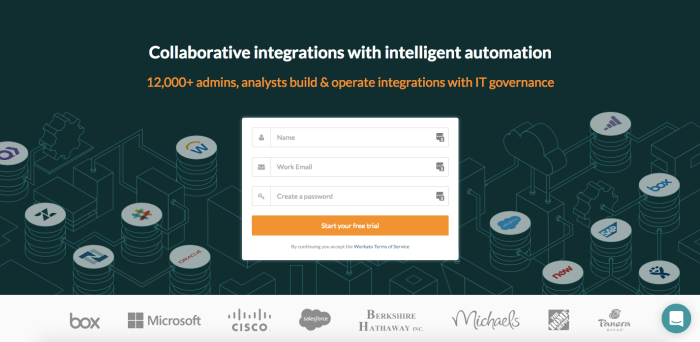
Source: g2crowd.com
The integration landscape is constantly evolving, driven by the proliferation of software systems and the increasing need for seamless data flow. Integration platforms like Workato are crucial in this dynamic environment, enabling businesses to connect disparate systems and unlock the full potential of their data. Understanding emerging trends and adapting to future innovations is critical for Workato to maintain its competitive edge.
Integration platforms are becoming increasingly sophisticated, moving beyond simple data transfer to encompass more complex tasks such as data transformation, orchestration, and automation. This shift necessitates a deeper understanding of how different software systems interact and how to optimize data flows for maximum efficiency.
Emerging Trends in Data Integration
The data integration space is witnessing several significant trends. Cloud-native architectures are becoming ubiquitous, demanding integration platforms capable of seamlessly handling cloud-based applications. Low-code/no-code platforms are gaining traction, enabling citizen developers to participate in integration projects. AI-powered automation is another key trend, streamlining integration processes and enhancing efficiency. Furthermore, the need for real-time data integration is rising, particularly in industries like finance and e-commerce. These trends represent both opportunities and challenges for integration platforms like Workato.
Workato’s Adaptability to Future Trends
Workato can remain competitive by embracing these trends. Expanding its cloud-native capabilities will be crucial, ensuring seamless integration with cloud-based applications. Integrating low-code/no-code features into its platform can attract a wider range of users, empowering citizen developers. Leveraging AI for automation and intelligent data transformation will be essential to streamline processes and optimize performance. Furthermore, developing real-time integration capabilities will provide a competitive edge in demanding sectors.
Potential Innovations in Integration Platforms
Several innovations are shaping the future of integration platforms. Integration platforms incorporating blockchain technology for secure and transparent data exchange represent a potential game-changer. The rise of edge computing requires platforms that can process data closer to the source, minimizing latency and improving real-time data handling. Furthermore, the development of platforms that can automatically learn and adapt to changing data structures and system interactions is a promising avenue for future innovation. These innovations could challenge Workato’s existing offerings but also present opportunities for collaboration and integration.
Different Integration Methods and the Role of Workato, Companies like Workato
Integration platforms like Workato are essential for connecting various software systems. Companies can integrate systems using different methods, including APIs, ETL processes, and custom scripting. However, these methods can be complex and time-consuming. Integration platforms offer a streamlined approach, providing pre-built connectors, intuitive interfaces, and automated workflows. This reduces the development time and cost associated with integrations, allowing companies to focus on core business activities.
- API-based integrations leverage Application Programming Interfaces (APIs) to facilitate communication between different systems. Workato excels in handling API interactions, automating data exchange, and managing complex API calls.
- ETL (Extract, Transform, Load) processes involve extracting data from source systems, transforming it to meet the needs of target systems, and loading it into the target systems. Workato’s robust ETL capabilities enable companies to efficiently transfer data between disparate systems.
- Custom scripting can be employed for complex integrations requiring specific logic. Integration platforms like Workato often provide scripting capabilities, allowing developers to tailor integrations to their unique requirements.
Ending Remarks: Companies Like Workato
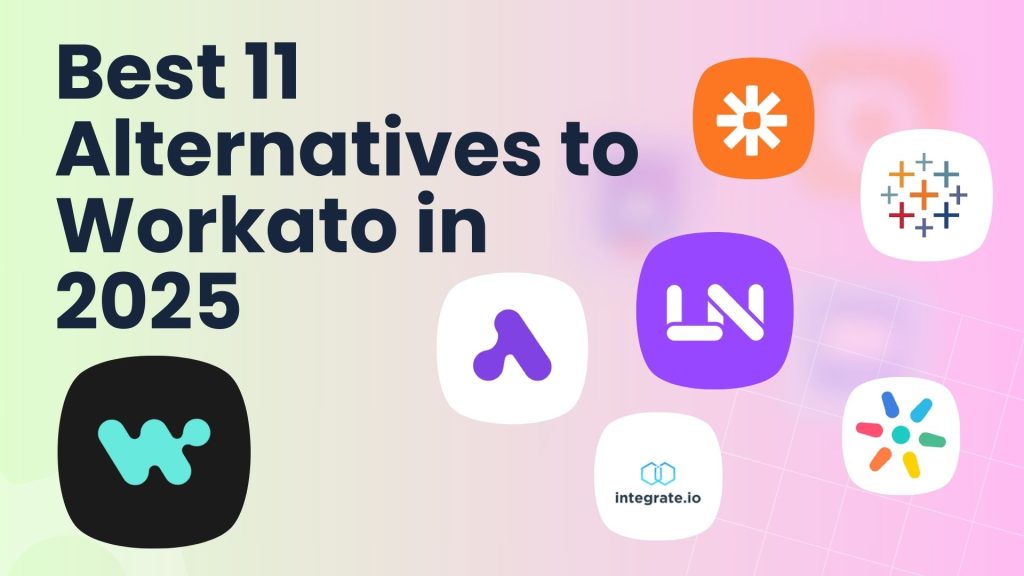
In conclusion, the integration landscape is dynamic, and Workato stands as a powerful tool within a competitive market. By comparing Workato to its key competitors, we can gain a clearer understanding of its unique value propositions and explore the diverse use cases it addresses. The analysis of future trends suggests a constantly evolving integration space, and Workato’s ability to adapt will be crucial to its continued success.


